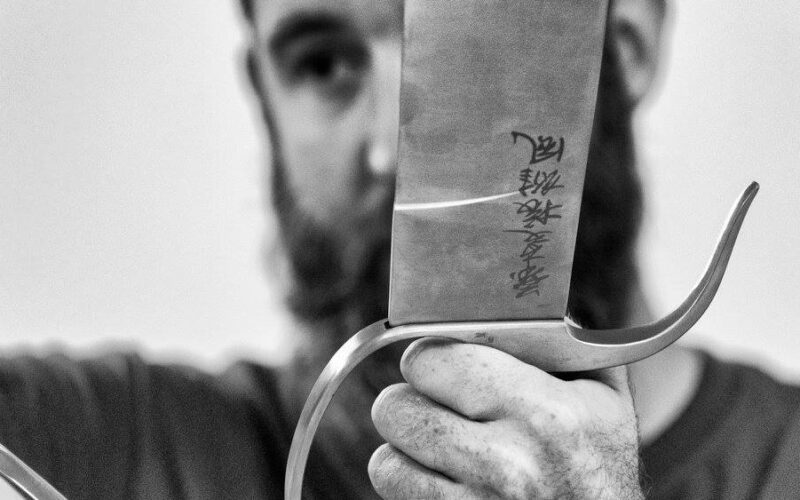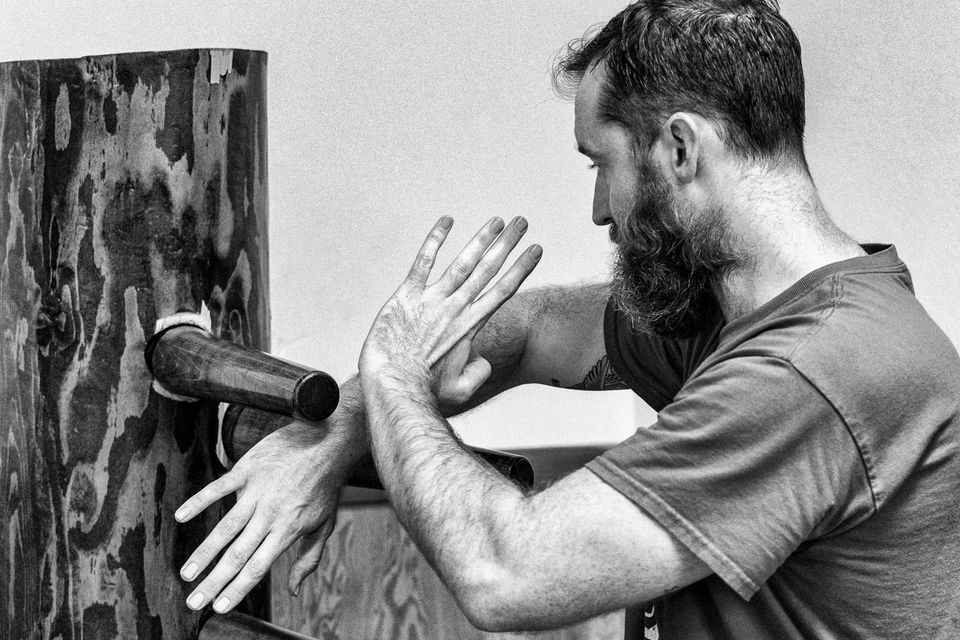The following has been reproduced with permission from http://www.greatwayma.ca/:
Simplicity is the overarching principle of Wing Chun. Maintaining forward intention and economy of motion allows for maximum speed and quick conflict resolution. As students progress from beginners to advanced, they not only learn varying techniques but also the art of doing less to gain quick control of any situation.
Legendary Origin – Sil Lum Temple
The Wing Chun style originated 250 years ago. Wing Chun was created in the Sil Lum Shaolin Buddhist Monastery of Mt. Sung, in Honan Province in China as a reaction to the repressive Manchu government during the Ching Dynasty. Opinions differ on the actual individuals involved in the lineage from origin to today. Our best source for the origin of Wing Chun is late Grand Master Yip Man. According to Yip Man, it was created by 5 Shaolin Grand Masters at Sil Lum as a new fighting style that would dominate other fighting arts and require much less training time to master. The 5 masters were Abbot Chi Shin, Abbot Pak Mei, Master Fung To Tak, Master Miu Hin & aged Buddhist nun Ng Mui. Kung Fu became very strong at Sil Lum, arousing the fear of the Manchu government [a non-Chinese people from Manchuria in the North, who ruled China at that time], which attacked the monastery. Although they were unsuccessful, a civil servant seeking government favor named Chan Man Wai, devised a treacherous plan to burn Sil Lum temple to the ground.
After Sil Lum was burned down, the monks and disciples scattered. The 5 masters escaped and went their separate ways. Ng Mui took refuge in the White Crane Temple on Mt. Tai Leung. Ng Mui met Yim Yee and his daughter Wing Chun from whom she often bought bean curd. Miss Yim Wing Chun was a native of Canton Province in China. She was an intelligent and athletic young girl, upstanding and forthright. At fifteen, Wing Chun’s beauty attracted the attention of a local bully who tried to force Wing Chun to marry him. Ng Mui learned of this and agreed to teach Wing Chun fighting techniques for self defense. Wing Chun trained night and day until she mastered the techniques. Then she challenged the bully to a fight and beat him. Ng Mui charged Wing Chun to develop and honor the kung fu after she married.
Yim Wing Chun -> Yip Man
Wing Chun translates as “hope for the future”. She taught her husband Leung Bok Chau who taught Leung Lan Kwai. Leung Lan Kwai passed it on to Wong Wah Bo, a member of an opera troupe on board a junk, known as the Red Junk. Wong worked on the Red Junk with Leung Yee Tei. Abbot Chi Shin, who fled from Sil Lum was in hiding as a cook working on the Red Junk. Chi Shin taught the Six-and-a-half-point Long Pole to Leung Yee Tei. Wong Wah Bo & Leung Yee Tei shared & improved their techniques. Thus the Six-and-a-half-point Long Pole was incorporated into Wing Chun Kung Fu. Leung Yee Tei taught Leung Jan, an herbal Doctor in Fat Shan who attained the highest level of proficiency. Leung Jan became very famous. Later he passed his Kung Fu on to Chan Wah Soon, who took Yip Man as his student. It can thus be said that the Wing Chun System was passed on to Yip Man in a direct line of succession from its origin. Although the details of Ng Mui and Yim Wing Chun are debatable, the direct lineage is unquestionable.
William Cheung, Bruce Lee & Brian Lewadny
Yip Man taught current world Grand Master William Cheung in Hong Kong. After Yip Man passed away, William Cheung opened Traditional Wing Chun to the world, teaching the once-private style widely across the world. William Cheung’s two most exceptional students were Bruce Lee and Brian Lewadny.
Lineage chart
- Yim Wing Chun
- Leung Bok Chau
- Leung Lan Kwai
- Leung Bok Chau

